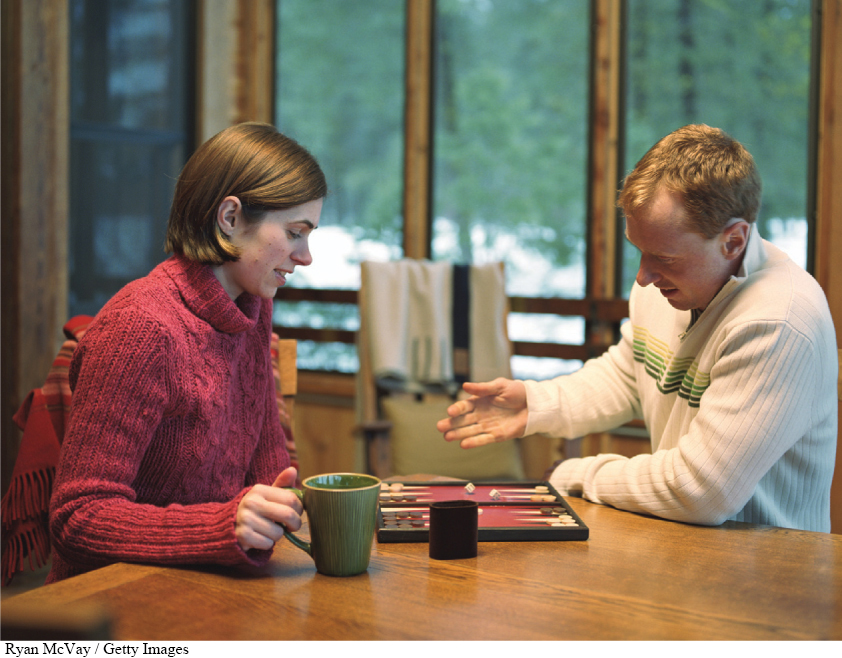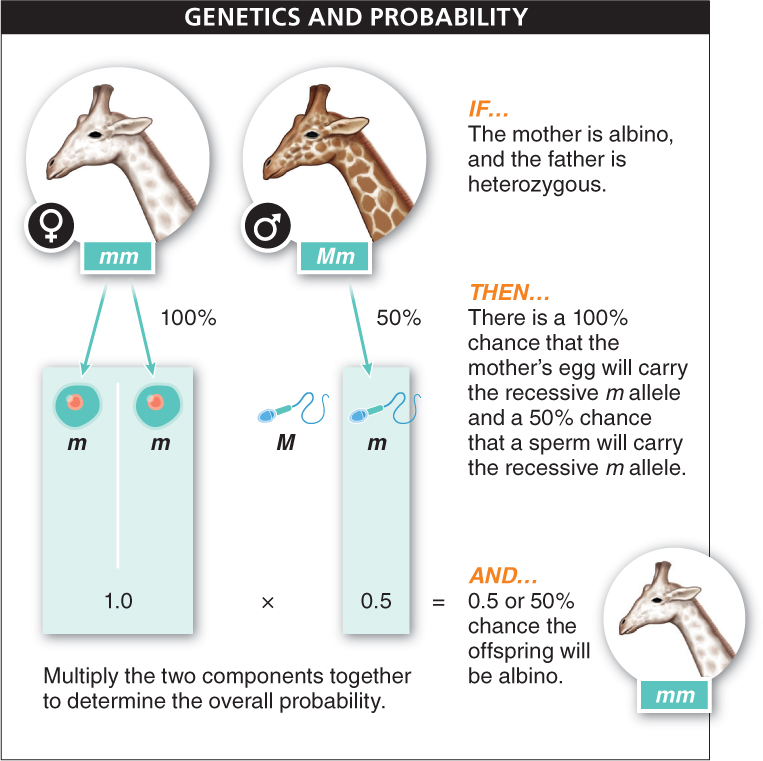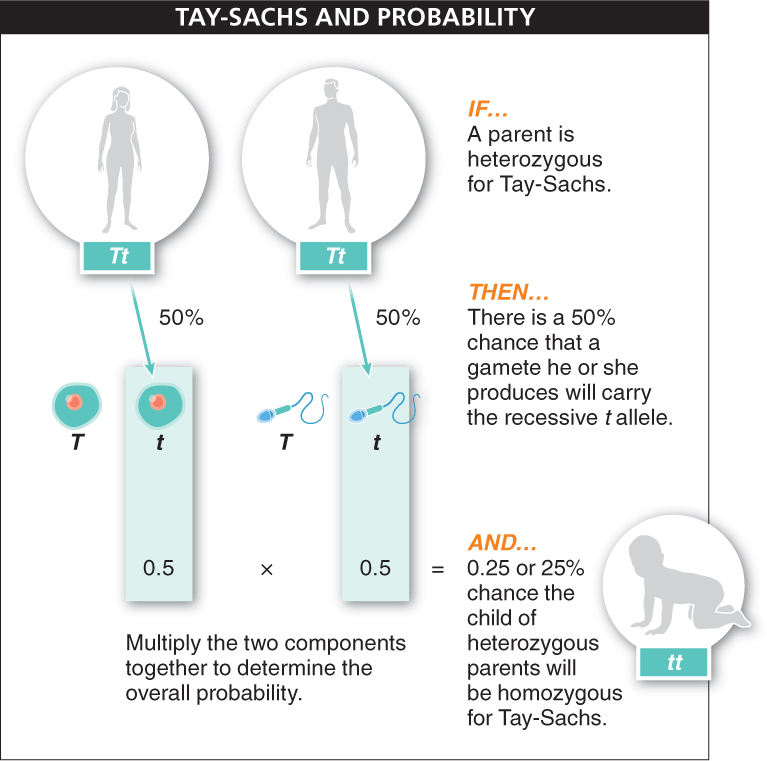
Sometimes genetics is a bit like gambling. Even with perfect information, it can still be impossible to know the genetic outcome with certainty. It’s like flipping a coin: you can know every last detail about the coin, but you still can’t know whether the coin will land on heads or tails. The best you can do is define the probability of each possible outcome.
The rules of probability (the same ones that govern coin tosses and the rolling of dice) have a central role in genetics, for two reasons. The first is a consequence of segregation, the process Mendel described, in which each gamete an individual produces receives only one of the two copies of each gene that the individual carries in most of its other cells. As a result, it is equally likely that the haploid gamete—
Let’s explore how we can make predictions in games of chance, as well as in matings, based on probabilities. If an individual is homozygous for a trait, 100% of his or her gametes will carry that allele. Any gamete produced by an individual heterozygous for a trait has a 50% probability of carrying the dominant allele and a 50% probability of carrying the recessive allele. Let’s use these probabilities in an example.
If a male is heterozygous for albinism (Mm) and a female is albino (mm), what is the probability that an offspring of theirs will be homozygous for albinism (mm)? To get the mm outcome, two events must occur. First, the father’s gamete must carry the recessive allele (m), and second, the mother’s gamete must carry the recessive allele (m). In this case, the probability of a homozygous recessive offspring is 0.5 (the probability that the father’s gamete carries m) times 1.0 (the probability that the mother’s gamete carries m), for a probability of 0.5. This is a general rule when determining the likelihood of a complex event occurring: if you know the probability of each component that must occur, you multiply all the probabilities together to get the overall probability of that complex event occurring (FIGURE 7-13).

289
Consider another example, involving Tay-
To solve this, break down the event of the child having Tay-

Of course, if the couple has only one child, we can’t predict with certainty whether the child will have Tay-
TAKE-HOME MESSAGE 7.6
Probability plays a central role in genetics. In segregation, each gamete that an individual produces receives only one of the two copies of each gene the individual carries in its other cells, but it is impossible to know which allele goes into the gamete. Chance plays a role in fertilization, too: all of the sperm or eggs produced by an individual are different from one another, and any one of those gametes may be the gamete involved in fertilization.
What is the probability that a couple will have a child with Tay-
Tay-Sachs occurs only if a child inherits two recessive alleles for the Tay-Sachs gene from its parents. Therefore, there is zero probability that a child born to these parents will have Tay-Sachs disease; however, there is a 50% chance the child will be a carrier.